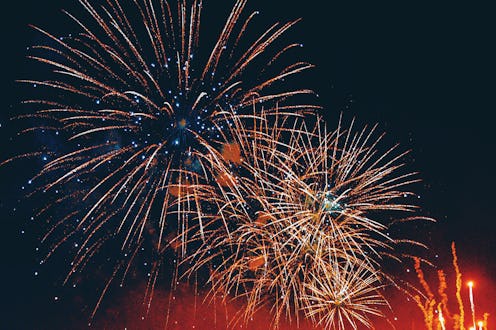
If I had a penny for every time I referred to “Auld Lang Syne” as something that is… not that when I was a kid (variations dropping from my 5-year-old-mouth included “Old Lang Sign” and “Old Land Sang”), I would probably have at least a couple of extra bucks in my savings account. But even though I did eventually figure out that no, it had nothing to do with street signs or anything, I recently realized that I’ve never actually bothered to find out what “Auld Lang Syne” actually means. Like, as a phrase. So since we’re all readying our ears for the repeated playing of this classic tune when the clock ticks over to the new year soon, now seems like as good a time as any to lay this mystery to rest. Let’s take a look, shall we?
Without giving anything away before we get to it, I’ll admit that I was kind of tickled to find that my weird-o phonetic translations of the phrase weren’t that far off the mark. Not in terms of the actual sense of the words, but in terms of the fact that, yes, “Auld Lang Syne” actually does have a direct English analog that sounds pretty much like you’d think it would. But what is that translation? OK. Fine. Let’s get to it. Here’s what “Auld Lang Syn” means, where it comes from, and why, exactly, we insist on drunkenly singing it in an out-of-tune screech every New Year’s Eve. Break out the champagne!
What Does It Mean?
This is the easy part: It’s Scottish phrase that means something along the lines of “times gone by.” More literally, it might be translated as “old long since.” (See? It does sound like "auld lang syne!")Makes sense for a song about nostalgia and toasting old friends, right?
Where Does It Come From?
The song as we know it was written by Scottish poet Robert Burns in 1788 — although the poem itself is actually much older than that; Burns was just the first person to put it down on paper. The phrase “auld lang syne” itself also appears in a number of other works that predate Burns’, including one by Allan Ramsay (who died in 1757, 31 years prior to the Burns poem).
As for the tune? According to some sources, what we sing it to these days may not have been the same one it was sung to in… times gone by (sorry not sorry). The familiar tune we all know and maybe love, maybe hate (depending on your point of view) is an old folk song — number 6294 in the Roud Folk Song Index, which chronicles somewhere in the neighborhood of 200,000 references to almost 25,000 folk songs collected from the English language oral tradition. The other possibility is also an old folk song, but you may know it better from a slightly unlikely source: The Sex and the City movie. It's playing in the background here:
Why Do We Sing It On New Year’s Eve?
Because of Guy Lombardo. The bandleader’s orchestra was famous for its New Year’s Eve performances; from 1929 to 1976, the orchestra played at New York’s Roosevelt Hotel and later the Waldorf Astoria Hotel, broadcasting their tunes over first the radio, then on television. According to popular lore, the band used the song as a transitional number between programs during the 1929 performance — and purely by coincidence, it ended up playing right as the clock struck midnight. It became a tradition after that, and it’s still carried on today as the ball drops in Times Square every year.
So there you have it, folks: Everything you could possibly want to know about a New Year’s song that isn’t actually a New Year’s song at all. We ascribe meaning to the strangest things, don’t we?
Happy almost-New Year, everyone!
Images: Getty Images (3)